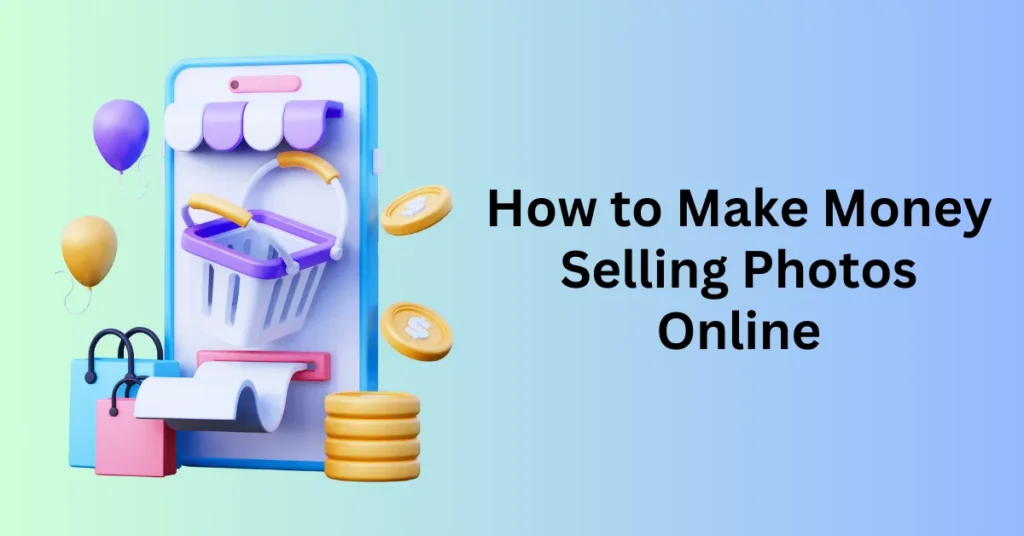Are you dreaming of launching your online store, or looking for a profitable side hustle to supplement your income? If you’re wondering how to turn those dreams into reality and start to make money using Shopify, you’ve come to the right place. This comprehensive guide will show you how to transform your ideas into a flourishing online business that generates real income.
In this blog post, we’ll explore proven strategies used by successful Shopify store owners worldwide. These approaches have helped countless entrepreneurs build thriving businesses. We’ll also share key lessons from those who have created booming online empires. Whether you’re interested in dropshipping, selling custom-made products, or curating unique items, this guide has you covered. It will equip you with the knowledge, insights, and confidence you need to begin your own Shopify journey.
So, if you’re ready to unleash your entrepreneurial potential and tap into the power of this dynamic platform, let’s get started. Your successful Shopify store is just a few steps away—let’s dive in!
Start Your Shopify Store Today with Free Trial
Different Ways To Make Money With Shopify
As a top-tier eCommerce platform, Shopify enables people from all backgrounds to create and scale thriving online businesses. Whether you’re a designer showcasing your work, a marketer focused on boosting traffic, or anyone else looking to succeed online, Shopify offers an extensive range of tools and resources to support your journey to earning income online.
1. Start A Print-On-Demand Store
Print-on-demand (POD) is a game-changer for creators and entrepreneurs who are launching a Shopify store. Its low-risk, high-reward model lets you monetize creative designs without managing inventory or upfront costs. Whether you’re an artist, designer, or entrepreneur passionate about unique products, POD offers an easy way to turn your ideas into profit.

POD makes selling custom-designed products simple. You create your designs and upload them to a platform like Printful or Printify. When a customer places an order, the design is printed on the product—whether it’s a t-shirt, mug, tote bag, or something else—and shipped directly to the buyer.
The beauty of POD is that products are only made when an order is placed. You don’t need to pay for stock upfront. This allows you to test different designs and products without financial risk, allowing you to experiment and find what resonates with your audience.
What You Can Sell
There’s a wide variety of customizable products that you can sell through Shopify using POD. Some of the most popular and bestselling items include:
- T-shirts and Hoodies: These are staples in the POD world, loved for their versatility. Eye-catching designs, witty slogans, and personalized logos can turn basic apparel into must-have items.
- Mugs: Custom mugs are perfect for gifting, with endless possibilities for quirky designs, motivational quotes, or personalized messages.
- Tote Bags: Eco-conscious consumers love reusable tote bags, which can be both practical and fashionable. They are ideal for showcasing artistic or branded designs while promoting sustainability.
- Phone Cases: Personalization is key when it comes to phone cases, making them a popular choice for POD sellers. Customers enjoy adding a personal touch to their everyday tech accessories.
- Posters and Wall Art: Posters, canvas prints, and wall art featuring custom illustrations, photography, or typography are popular for customers looking to decorate and personalize their living spaces.
The list doesn’t stop there. The world of print-on-demand continues to grow, offering endless possibilities. From tech accessories like laptop sleeves to home decor items such as throw pillows, blankets, and even shower curtains, there’s a wealth of products you can experiment with to discover what works best for your brand.
Why Print-on-Demand Works
Print-on-demand (POD) is perfect for entrepreneurs looking to tap into creative markets without the logistical challenges of traditional retail. Moreover, you only produce what sells, which reduces waste and upfront costs. Consequently, this flexibility allows you to shift and adapt to changing trends, offering products that reflect your target audience’s interests.
Additionally, many successful Shopify stores have used POD to build brands that celebrate individuality and creativity. By focusing on unique and appealing designs that stand out in the marketplace, you can tap into a wide customer base and build a profitable business. Whether you’re passionate about fashion, home decor, or niche products, POD enables you to showcase your creativity while generating income.
Furthermore, by leveraging print-on-demand, you can transform your ideas into a thriving Shopify store that reflects your unique vision while minimizing financial risks. With the right combination of compelling designs and targeted marketing, you can create a successful print-on-demand business. The possibilities are endless—so why wait? Start your journey today!
Start Your Shopify Store Today with Free Trial
2. Dropshipping
Dropshipping is a popular fulfillment method for online stores, allowing entrepreneurs to sell products without holding any inventory. Instead of stocking goods, the store transfers customer orders and shipment details to a third-party supplier, who then ships the product directly to the customer. This eliminates the need for store owners to physically handle the products, making dropshipping a low-risk and scalable business model.

In the dropshipping model, your main task is to curate a selection of products from various suppliers and feature them on your Shopify store. You’re responsible for setting the retail prices, which are higher than the supplier’s cost. Your profit is the margin between what the customer pays and the price you pay the supplier.
The process is straightforward:
- Find Reliable Suppliers: Choose reputable suppliers with quality products and dependable shipping.
- List Products on Your Store: Curate items that align with your store’s niche or target audience, and showcase them on your Shopify store with clear descriptions, attractive images, and competitive pricing.
- Customer Places an Order: When a customer orders from your store, you forward the order to the supplier.
- Supplier Ships the Product: The supplier handles fulfillment and ships the product directly to the customer, while you focus on customer service, marketing, and growing your brand.
Key to Success
A successful dropshipping business hinges on selecting the right products and creating a strong brand identity. Here are a few essential strategies:
- Choose Products with High Demand and Low Competition: It’s crucial to research products that are trending or in demand but aren’t oversaturated in the market. Tools like Google Trends, AliExpress, or product research platforms can help you spot opportunities.
- Create a Strong Brand: Even though you’re not manufacturing or handling the products yourself, you still need to build a brand that customers trust. A well-defined brand with a clear message, professional design, and excellent customer experience can set you apart from competitors and encourage repeat business.
- Focus on Marketing and Customer Service: Since dropshipping doesn’t involve managing inventory, your main focus can be on driving traffic to your store through social media, SEO, and paid advertising. Additionally, great customer service can help boost your store’s reputation, leading to better reviews and increased sales.
With the right mix of products, marketing, and branding, dropshipping can become a highly profitable and scalable business model. Its flexibility and low overhead costs make it appealing to new entrepreneurs. It’s also a great option for those looking to expand an e-commerce store without large upfront investments.
3. Selling Handmade Products
Shopify is an ideal platform for artisans and crafters who want to showcase and sell their handmade creations to a global audience. Its highly customizable storefront lets you design a visually stunning online shop. You can capture the essence and uniqueness of your handmade products while building a professional and captivating brand.
To get started, you’ll want to design a Shopify storefront that reflects the personality and craftsmanship of your handmade items. Here’s a step-by-step guide:
- Create a Customized Storefront: Shopify’s easy-to-use design tools make it simple to create a store that feels personal and inviting. Choose a theme that aligns with the aesthetics of your handmade items, whether it’s minimalist, vintage, or colorful.
- Use High-Quality Photos: Beautiful, clear images are essential for showcasing the details of your handmade products. Invest in good photography or use natural lighting to capture the textures, colors, and unique elements of each item.
- Write Engaging Product Descriptions: Descriptions should tell the story behind each item—what inspired it, how it was made, and why it’s special. Adding details about the materials used and the craftsmanship involved can help buyers appreciate the value of your work.
- Share Your Story: Handmade items often come with a personal story, and sharing that narrative can create a deeper connection with your audience. You can include an “About” page on your store where you talk about your journey as a crafter, your passion for handmade goods, and the inspiration behind your work.
- Customer Testimonials and Feedback: Adding reviews from satisfied customers or even feedback from friends and family can provide social proof that encourages new buyers.
Pricing Handmade Items
When pricing handmade items, it’s important to consider the value of your time, the cost of materials, and the unique qualities of each piece. Unlike mass-produced products, handmade items often carry a premium due to the labor and creativity involved. Shopify provides tools to help you easily manage your pricing strategy, including discounts, sales, and special promotions. You can set prices that reflect the true worth of your products while maintaining competitive profit margins.
In addition, Shopify’s inventory management tools allow you to keep track of your materials and supplies, helping you make informed decisions when pricing products. Whether you’re selling one-of-a-kind items or limited runs, you have full control over your stock, pricing, and promotions.
By leveraging Shopify’s features, you can create an online space that celebrates the artistry and individuality of your handmade products. Focus on crafting a memorable shopping experience, from the look of your store to the way you engage with customers. With the right balance of creativity and business strategy, you can grow your Shopify store into a successful platform that supports your passion for handmade goods.
4. Shopify Affiliate Program

The Shopify Affiliate Program is an excellent way to earn extra income by promoting Shopify, especially if you have an audience interested in ecommerce, digital marketing, or online business. Whether you’re a content creator, blogger, or social media influencer, this program offers a rewarding opportunity to monetize your platform by recommending Shopify to your followers.
Getting started with the Shopify Affiliate Program is simple and free. Here’s a breakdown of the process:
- Sign Up: Begin by signing up for the Shopify Affiliate Program. Once approved, you’ll receive a unique referral link that tracks the users you refer to Shopify.
- Share Your Referral Link: Incorporate your referral link into your content. You can promote Shopify through blog posts, social media updates, YouTube videos, newsletters, or any other platform where you engage with your audience. The key is to naturally integrate the link within content related to ecommerce, online stores, or digital entrepreneurship.
- Earn Commissions: Each time someone clicks your referral link and signs up for a paid Shopify plan, you’ll earn a commission. The more people you successfully refer, the more you can earn. Shopify pays out commissions for successful referrals, allowing you to generate ongoing revenue.
- Access Marketing Resources: As an affiliate, you’ll gain access to Shopify’s marketing toolkit, which includes banners, logos, and other promotional resources. These materials are designed to help you effectively promote Shopify to your audience in a way that aligns with your brand and message.
Ideal for Content Creators
The Shopify Affiliate Program is highly versatile and can be adapted to suit various types of content creators:
- Bloggers: If you run a blog that focuses on ecommerce, online business, or entrepreneurship, you can easily include Shopify recommendations in your posts. For example, if you write about “How to Start an Online Store,” you can feature Shopify as the preferred platform. Include your referral link in the post to guide readers toward signing up.
- Video Creators: If you produce video content, especially tutorials or reviews about ecommerce, digital marketing, or business growth, you can promote Shopify on platforms like YouTube, TikTok, or Instagram. Adding your affiliate link in video descriptions is an effective strategy. You can also mention it within your videos to lead viewers to Shopify.
- Social Media Influencers: Social media is another powerful tool for promoting Shopify. Influencers who focus on entrepreneurship, online business, or technology can share their affiliate link in their bios. They can also include it in stories or posts. This gives followers direct access to Shopify’s platform and encourages them to sign up.
The Shopify Affiliate Program is a win-win for both affiliates and their audience. Affiliates earn commissions by promoting a trusted, high-demand platform. Meanwhile, their audience gains access to one of the best e-commerce tools available.
With Shopify’s reputation for ease of use and powerful features, it’s an easy and authentic recommendation for anyone looking to build an online store. Whether you’re a blogger, video creator, or social media influencer, the program offers a scalable way to generate extra income. By promoting Shopify, you can tap into the growing demand for online business solutions and earn commissions on each successful referral.
Start Your Shopify Store Today with Free Trial
5. Selling Digital Products
Imagine this: you’ve mastered the art of design, and your skills in creating stunning graphics, patterns, or fonts have become second nature. But instead of limiting these creations to your own projects, why not turn them into a profitable business by selling them as digital downloads? Even if design isn’t your expertise, the digital product space is full of opportunities. Anyone with knowledge or skills in a high-demand area can transform their passion into profit. From ebooks and photography presets to online courses, there are endless ways to monetize your expertise and make money online.
The first step is brainstorming product ideas that align with your skills and interests. If you’re a designer, consider creating social media templates, website banners, or downloadable fonts that other creators can use. If you’re a marketer or entrepreneur with valuable insights, you might package your expertise into online courses or ebooks. Think about the needs of your audience and how your unique skills can solve their problems or add value to their work.
Once you’ve identified the types of digital products you want to create, the next step is to set up a professional and engaging online storefront. With Shopify, you can easily design a store that highlights your digital products using customizable templates and user-friendly tools. An appealing storefront is essential in drawing in potential customers and encouraging them to explore and purchase your offerings.
Selling Your Digital Products
Now comes the fun part—putting your digital products out into the world! There are countless types of digital downloads you can sell, including:
- Ebooks: Share your knowledge, expertise, or creative writing with the world.
- Design Templates: Offer pre-made templates for websites, social media, or branding.
- Online Courses: Package your insights into educational content that helps others learn new skills.
- Photography Presets: Share your custom filters and presets with aspiring photographers.
- Software Licenses: If you’re a developer, you can sell software or licenses for apps, plugins, or tools you’ve created.
The beauty of digital products is their scalability. Once you’ve created them, you can sell unlimited copies without ever worrying about stock or inventory. Every time a customer makes a purchase, Shopify automatically sends them a download link, ensuring an instant, seamless transaction. This means no shipping logistics, no packaging costs, and no stock management—just pure digital delivery.
Selling digital downloads offers several advantages over traditional physical products. First, customers gain immediate access to their purchases. This instant gratification can lead to higher customer satisfaction and encourage repeat business. As a seller, you can also continually expand your portfolio by adding new products. This allows you to target different market segments, price points, and customer interests.
Digital products are cost-effective to produce. Once you complete the initial design, course, or ebook, you can sell it repeatedly without incurring additional production costs. This creates opportunities for significant profit margins and passive income. Additionally, you can reach a global audience without worrying about shipping fees or international logistics.
6. Create a Shopify Theme or App
Shopify isn’t just for selling physical products. It’s a platform with vast potential for developers, designers, and entrepreneurs who want to create custom website themes and apps. By exploring this side of Shopify, you can open new revenue streams while helping other merchants succeed in their online businesses.
Whether you’re a seasoned coder or looking to expand your skills, creating themes and apps for Shopify is an exciting opportunity. It allows you to generate income and build a thriving business in the process.
Building Custom Shopify Themes
To start developing Shopify themes, you’ll need some basic coding knowledge, particularly in HTML, CSS, and JavaScript. Additionally, learning Liquid, Shopify’s proprietary template language, is essential. Liquid acts as the backbone of Shopify’s theme system, allowing you to create dynamic content and customize the storefronts of Shopify merchants.
If you’re interested in app development, Shopify offers a lucrative opportunity. To get started, sign up for a Shopify Partner account. Then, set up a development store where you can test your app ideas. You’ll need a solid understanding of Shopify’s APIs and experience with backend development frameworks like Ruby on Rails or Node.js. Shopify’s API allows developers to interact with stores programmatically. This makes it possible to build apps that address specific pain points for merchants.
Tools like Shopify App Bridge and Polaris (Shopify’s design system) can streamline the app development process. They help ensure your apps integrate smoothly with Shopify’s platform and provide a seamless user experience.
Once your app is fully developed and tested, submit it for review to the Shopify App Store. Upon approval, you can start marketing and selling your app to Shopify’s extensive merchant community.
Tips for Success
Whether you’re building themes or apps, finding your niche is key to standing out in the Shopify ecosystem. Consider focusing on a specific industry or solving a common pain point for Shopify merchants. Here are a few strategies for success:
- Target Niche Markets: For themes, tailor your designs to specific industries. A theme for a health and wellness store may need calming, earthy tones, while a fashion boutique might require a more vibrant and elegant design. For apps, consider building niche solutions like advanced shipping integrations, inventory management tools, or custom product creation features. Addressing specific needs can increase the likelihood of your product being adopted by merchants.
- Prioritize Customization: Merchants want to personalize their stores to reflect their unique brands, so offering flexible, customizable features is a huge selling point. Whether it’s a theme with multiple layout options or an app that integrates seamlessly with other Shopify tools, focusing on flexibility makes your product more valuable to a wider audience.
- Thorough Testing: Ensure your themes and apps are thoroughly tested for functionality, mobile responsiveness, and cross-browser compatibility. A polished, well-functioning product is crucial to gaining positive reviews and growing your customer base.
- Marketing Your Product: Once your theme or app is live on Shopify’s marketplace, promoting it is key. You can leverage social media, write blog posts, or collaborate with influencers to showcase your product. Highlight the unique features and how they benefit merchants, providing demonstrations and tutorials to attract users.
Shopify’s ecosystem is filled with talented developers and designers who have carved out a niche by creating innovative solutions. From beautifully designed themes to powerful apps that solve complex ecommerce challenges, there are countless examples of individual creators turning their skills into successful businesses.
7. Join Shopify Expert Marketplace
The Shopify Expert Marketplace is an invaluable resource for both merchants and skilled professionals. For Shopify merchants, it serves as a central hub to hire experts. These experts can enhance their stores, boost performance, and grow their businesses. For Shopify Experts, it provides a platform to showcase your skills in areas like design, development, or marketing. This can help you build a successful freelance career.
To get started, create a profile that highlights your skills, experience, and specialties. Whether you focus on store design, custom app development, SEO, or digital marketing, your profile should clearly communicate the value you offer. Be sure to include a portfolio with examples of past work, testimonials, and case studies. These elements will show your ability to deliver results for Shopify merchants.
Once your profile is complete, you’ll be listed in the marketplace. Shopify store owners can then find and hire you for various projects. The marketplace acts as a curated job board. Merchants post their needs here—whether it’s a store redesign, third-party app integration, or boosting conversion rates.
Navigating the Marketplace
The Shopify Expert Marketplace is filled with a wide range of projects that Shopify merchants need help with. From small tasks like setting up payment gateways to large-scale projects like complete store overhauls, there are plenty of opportunities to find work that matches your skill set.
- Explore Projects: As an expert, you can browse the marketplace to identify projects that align with your skills. It’s important to take the time to assess each project carefully, ensuring that it fits your expertise and interests.
- Tailor Your Proposals: Once you’ve found a project that seems like a good fit, you can submit a proposal. Rather than sending a generic pitch, customize your proposal to the specific needs of the client. Demonstrate how your unique skills can solve their problems and contribute to the success of their Shopify store. Highlight any relevant experience or previous projects that are similar in scope to what the client is seeking.
- Setting Your Rates: You have full control over the rates you charge for your services. Be sure to price your work according to your experience level and the value you bring. It’s also helpful to research what other experts in your niche are charging to ensure your pricing is competitive yet reflective of the quality of your work.
Benefits of the Shopify Expert Marketplace
- Access to a Global Audience: As a Shopify Expert, you can connect with merchants from around the world who are actively seeking your services. This opens up a vast array of opportunities to grow your client base and take on exciting projects.
- Niche Specialization: The marketplace allows you to position yourself as an expert in a particular area, such as SEO optimization for eCommerce, theme customization, or app development. By focusing on a niche, you can stand out from the competition and attract clients who need your specific skill set.
- Flexible Work Arrangements: Whether you’re looking for one-off projects or long-term collaborations, the Shopify Expert Marketplace offers flexibility in how you work. You can take on multiple clients at once or focus on bigger, more involved projects depending on your availability and goals.
- Growth and Visibility: Building a successful career through the marketplace can enhance your visibility in the Shopify ecosystem. Positive reviews and successful projects can help you climb the ranks, attracting even more clients and allowing you to charge higher rates over time.
Tips for Success
- Build Relationships: Offering exceptional service can lead to repeat business. Many Shopify store owners who find value in your services will return for additional work, helping you build long-term relationships and a steady income stream.
- Expand Your Skill Set: The more services you can offer, the more valuable you become to potential clients. Consider expanding your expertise to include high-demand services such as custom app development, conversion rate optimization, or social media marketing for e-commerce businesses.
- Market Yourself: In addition to using the marketplace, leverage other platforms such as LinkedIn, social media, or your personal website to promote your services. By positioning yourself as a thought leader in the Shopify ecosystem, you can attract more clients both inside and outside the marketplace.
The Shopify Expert Marketplace is a dynamic platform for skilled professionals looking to build a successful freelance career. By setting up a compelling profile, navigating the marketplace strategically, and delivering high-quality services, you can establish yourself as a go-to Shopify expert while growing your business and portfolio.
Final Thoughts: Complete Guide on How to Make Money on Shopify
Whether you’re an experienced entrepreneur or just starting out in an online business, Shopify offers plenty of opportunities to make money. You can sell digital products, offer print-on-demand merchandise, or create custom Shopify themes and apps. There’s a path for everyone, no matter your skills, interests, or business goals.
One of the most exciting aspects of Shopify is its ever-evolving nature. As new features, tools, and trends emerge, you can stay ahead by adapting your business or freelance services. Whether it’s integrating the latest e-commerce tools, trying fresh marketing strategies, or exploring niche markets, Shopify’s flexibility helps you grow and evolve alongside the platform.
Success on Shopify doesn’t happen overnight. It requires dedication, creativity, and a willingness to keep learning. By staying informed about the latest e-commerce trends, experimenting with new ideas, and refining your approach, you can unlock Shopify’s full potential. Whether you want to build a thriving e-commerce store, grow your freelance career, or create innovative Shopify apps, the possibilities are endless.
Now is the perfect time to explore Shopify. With various ways to earn money and the support of a dynamic community, you have the tools to turn your ideas into reality. So, take the first step toward selling online and start building the business of your dreams.
Start Your Shopify Store Today with Free Trial
Contact us if you have any questions after signing up for the free trial. Our team will be able to support and comment on your store design.


